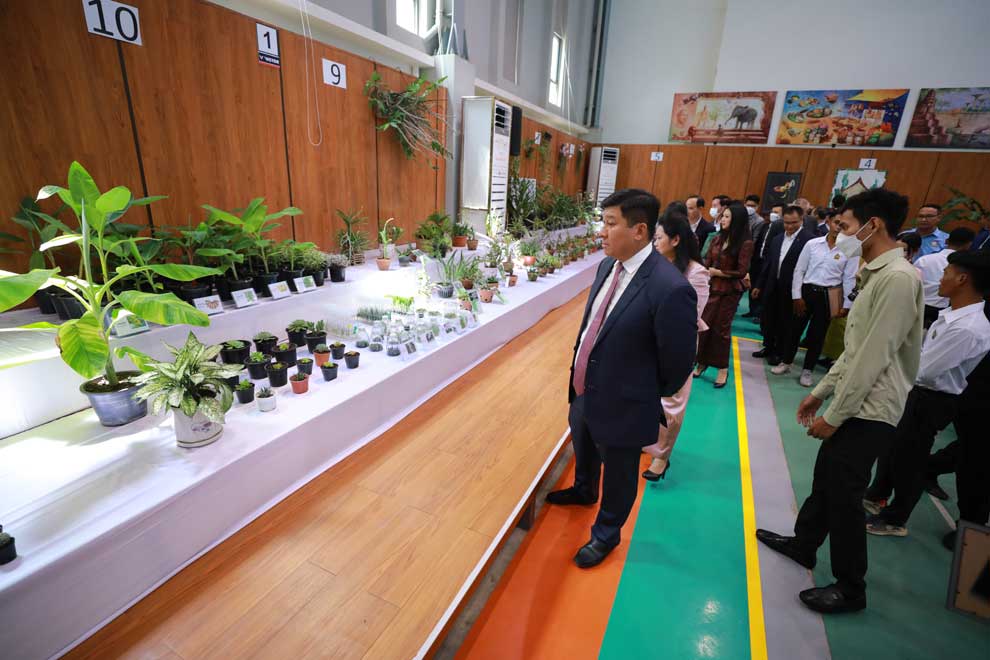
A vendor on motorbike trailer shows off his magnificent display of orchids and other household plants, along Street 143 in the capital’s Prampi Makara district on Wednesday, as the Kingdom observes National Orchid Day. Heng Chivoan
The Ministry of Environment has signed two memoranda of understanding (MoU) – one with the UK’s prestigious Royal Botanic Garden, Kew, and the other with development partners – to conserve biodiversity and research wild orchids in Cambodia.
The May 11 signing ceremony took place on the occasion of the ministry’s launch of the “Guidebook on Spices in Cambodia” at the second National Orchid Forum in Phnom Penh.
The MoU between the ministry and Kew Gardens establishes cooperation in the establishment and operation of offshore biodiversity centres in Cambodia.
The MoU between the ministry and development partners is intended to support the planning and operation of the Kesor Kol Sok An Phnom Kulen Research and Conservation Centre.
Say Samal – environment minister and chairman of the National Council for Sustainable Development – said the ministry’s core task was to conserve sustainable biodiversity. The Kingdom has 74 biodiversity conservation sites, including national parks, wildlife sanctuaries and landscape protection areas.
He said the ministry administered the parks of Cambodia according to the highest professional standards, with places for people to easily observe wildlife. Facilities such as bathrooms were also being built – to increase the convenience of the parks and attract more tourists.
These plans will ensure the long-term sustainability of the conservation of natural resources and biodiversity in Cambodia, he added.

Environment minister Say Samal visiting the orchid exhibition at UYFC on Wednesday. Hong Menea
“For example, take Kep Park. We have long intended to turn the conservation area into a national park. Kep is a small town with delicious seafood and a place which domestic and international tourists like to visit. We will establish this park as another reason to visit the town, and it will add long term value to the province,” he said.
Samal said the ministry also plans to improve some national parks – such as Kirirom and Phnom Kulen – and bring them up to international standards.
Speaking about the orchid forum, he said it aimed to raise awareness of Cambodia’s biodiversity in general, and orchid conservation more specifically. The forum would also share the valuable work that was being carried out at the Kesor Kol Sok An Phnom Kulen Research and Conservation Centre.
He added that the centre was also an important part of the local economic recovery, as well as lauding its participation in the conservation of biodiversity, such as orchids and coral.
The ministry prepared a guide to the spices of Cambodia to document the biological and physical details of the myriad of native plants, and also their practical uses, some of which had been used by the ancient ancestors of the Khmer people, he said.












